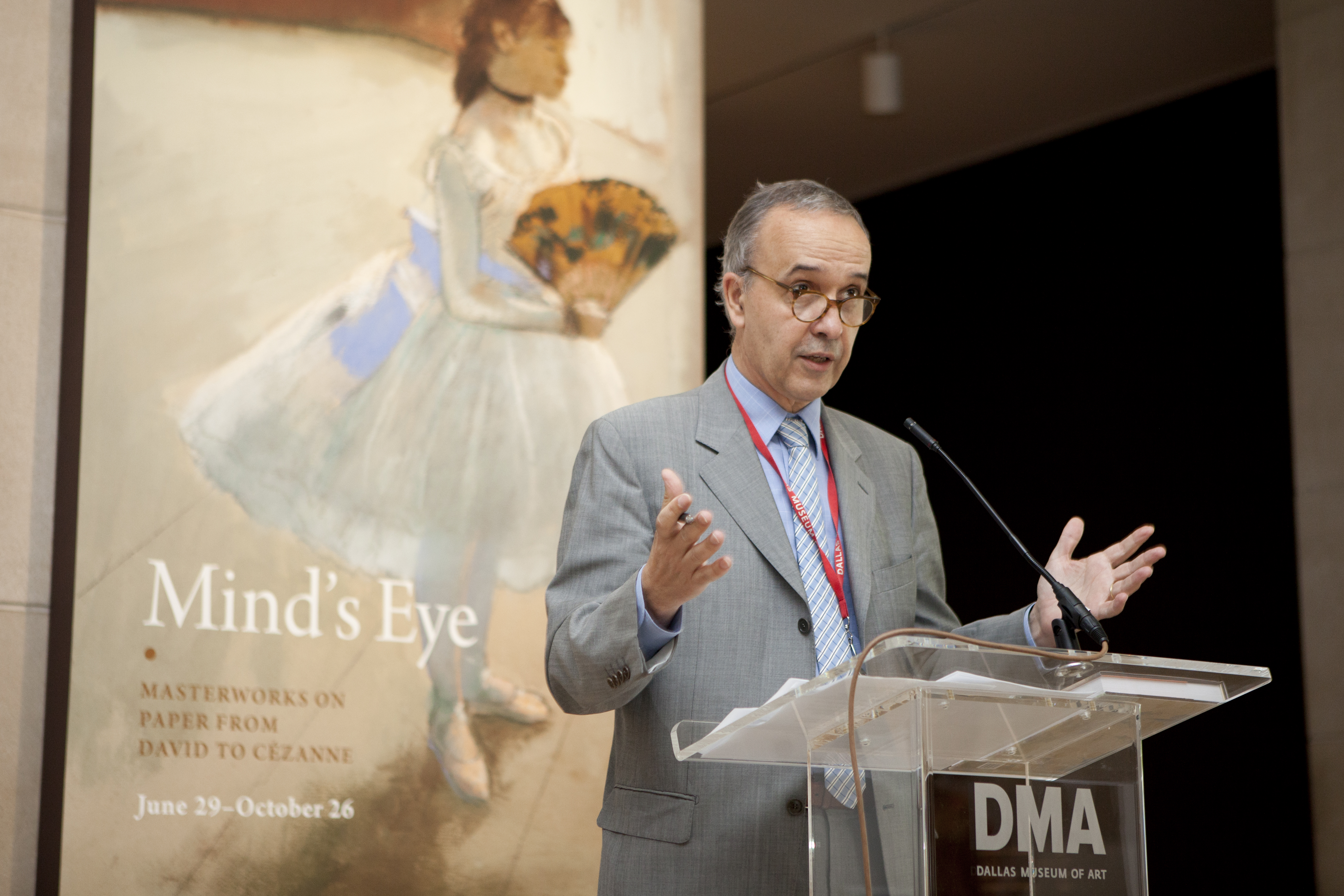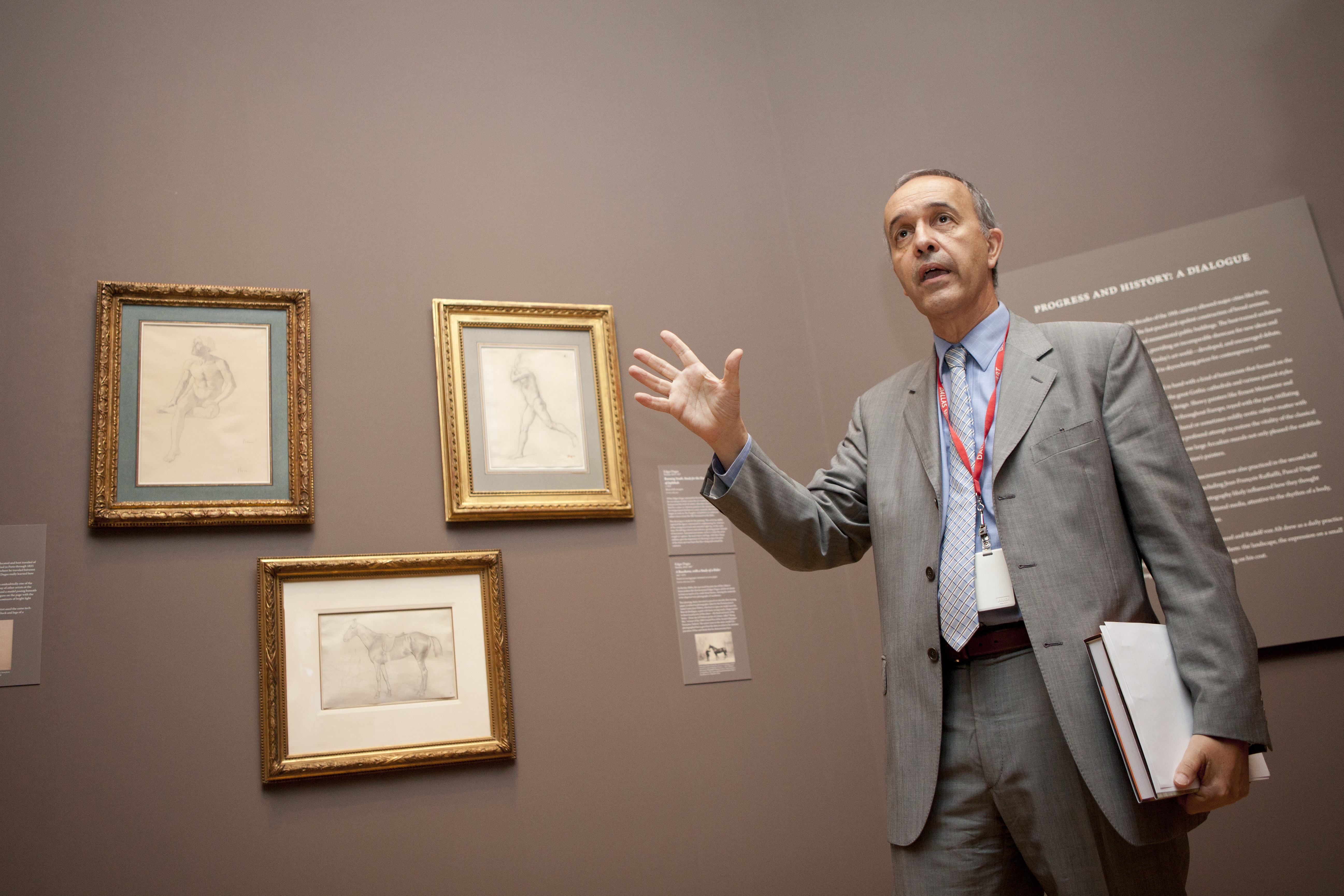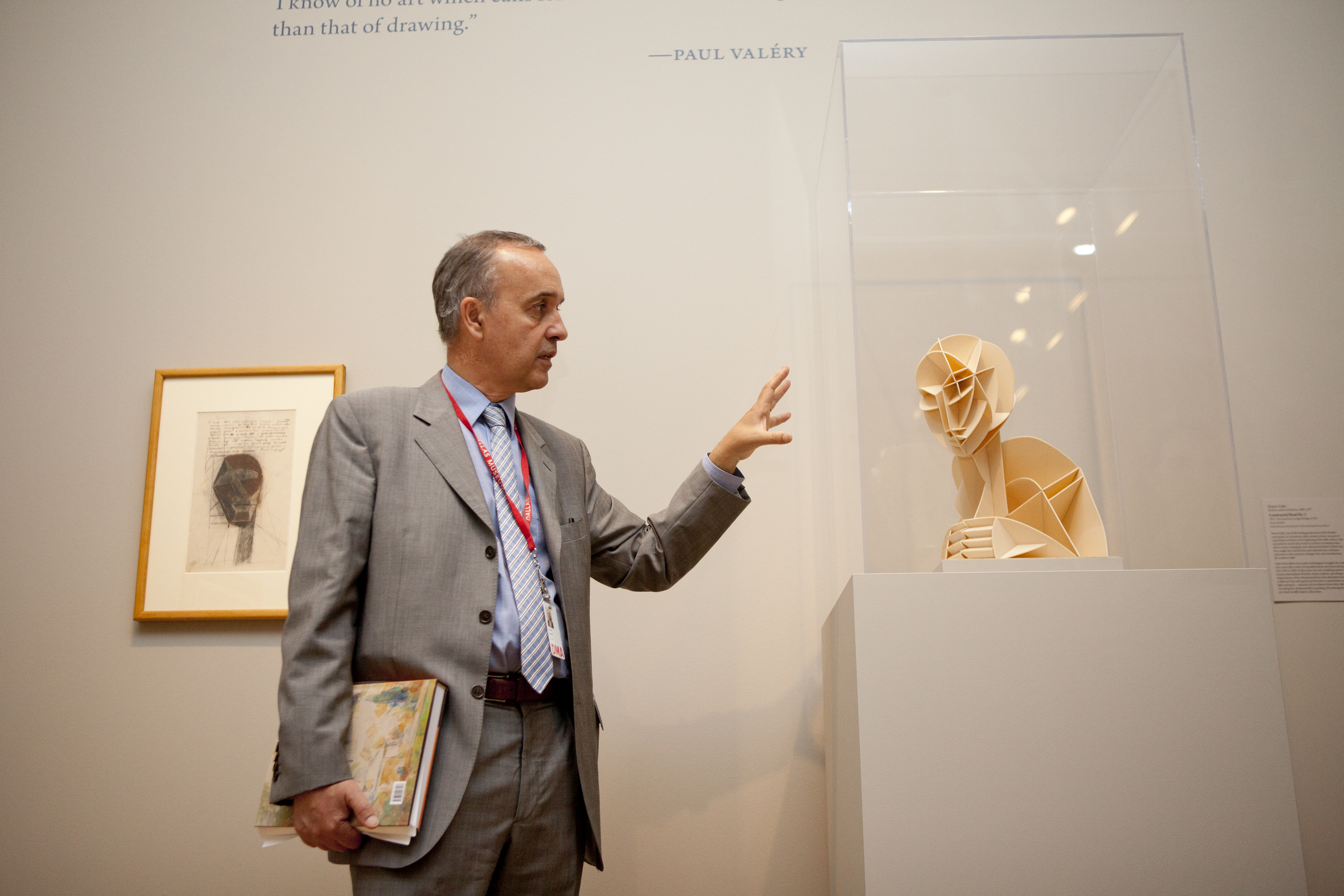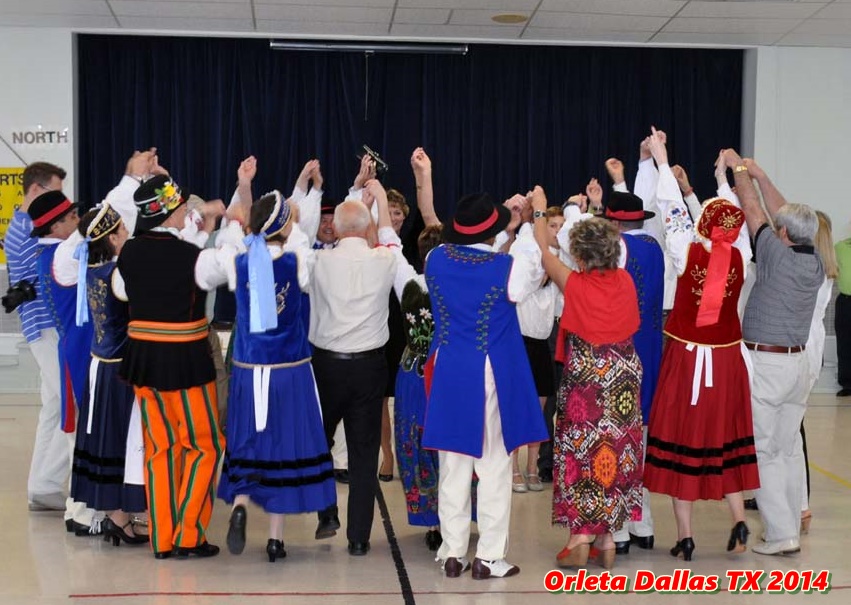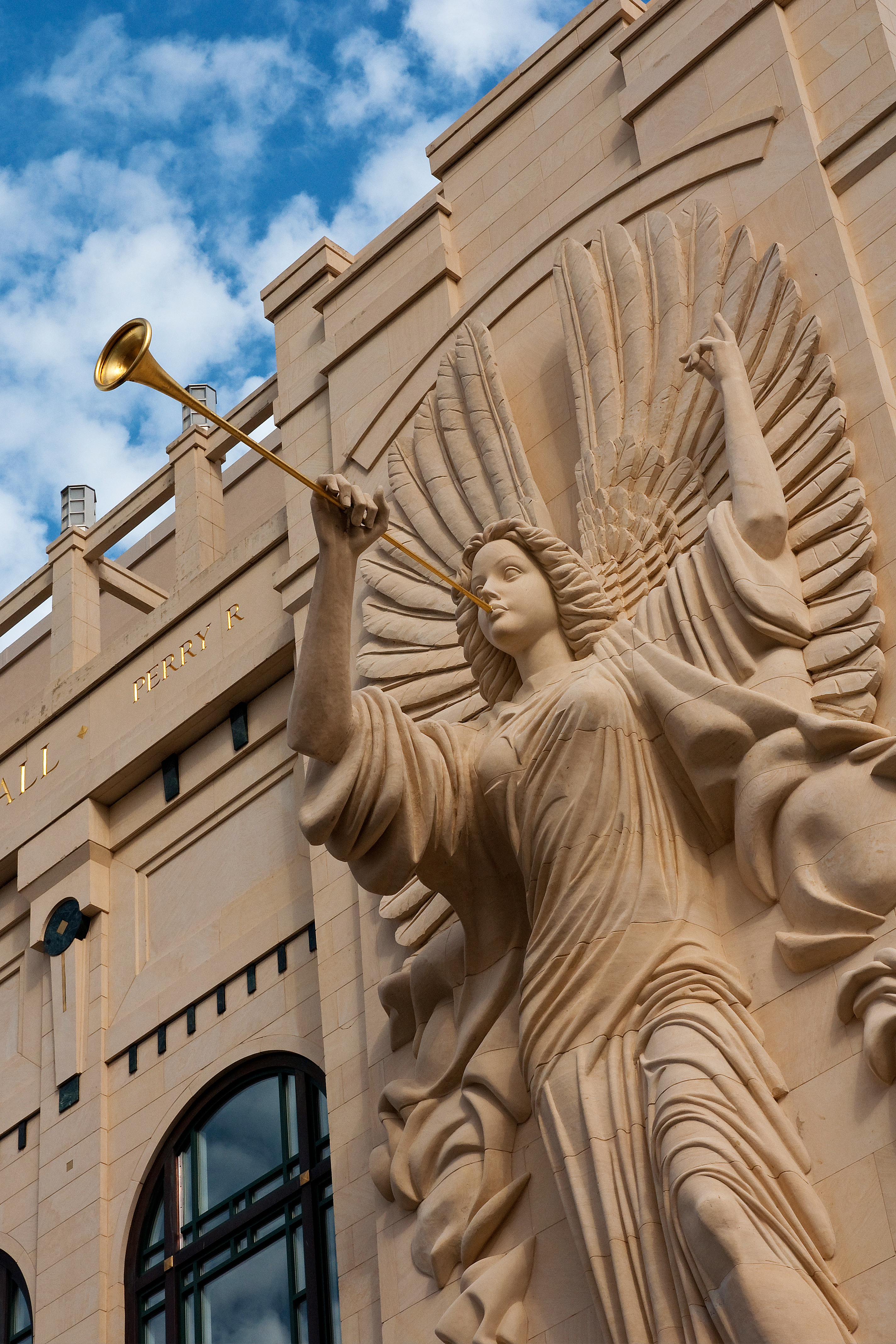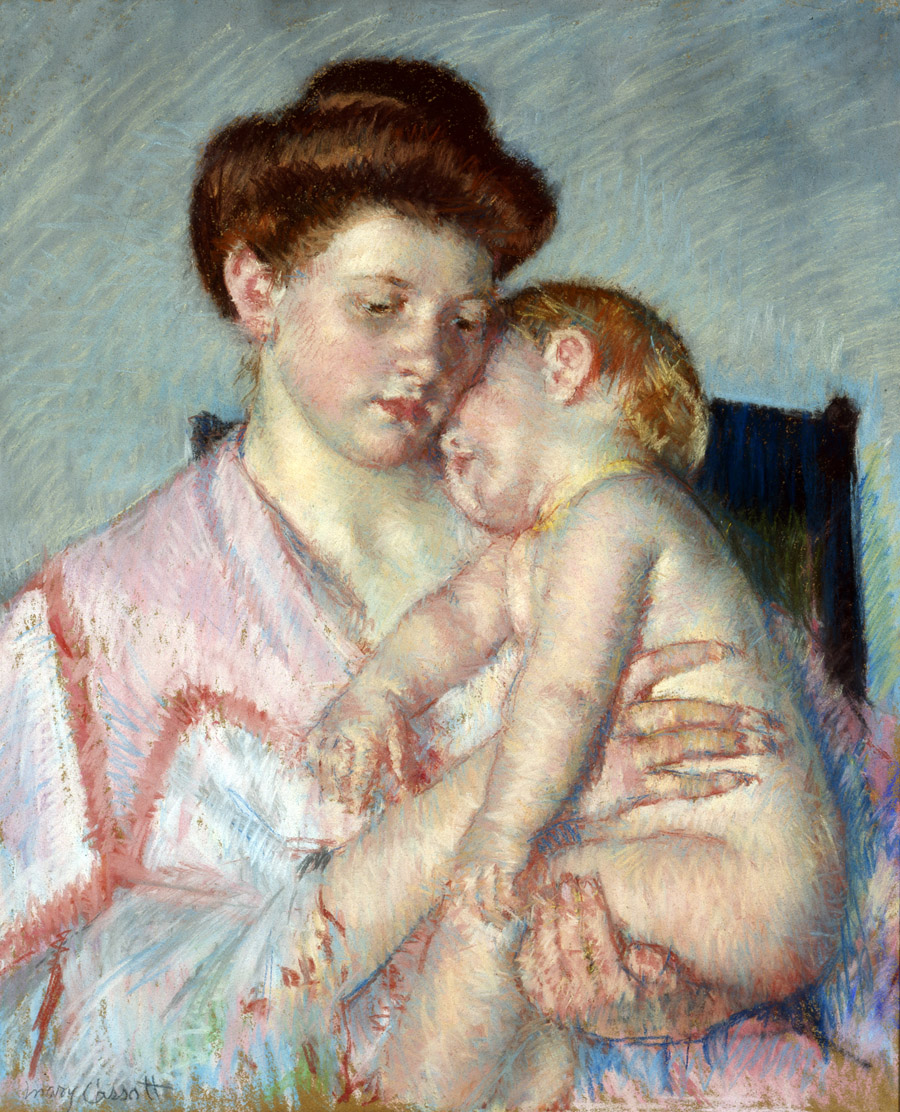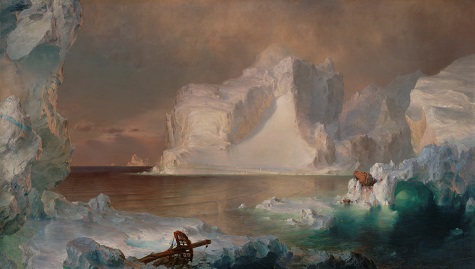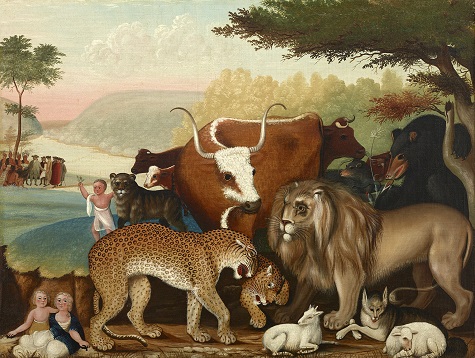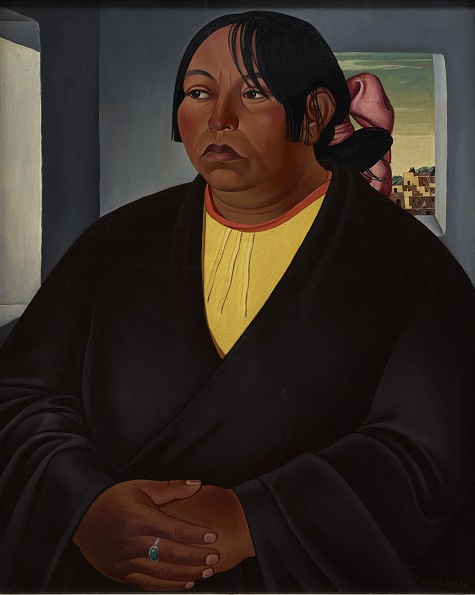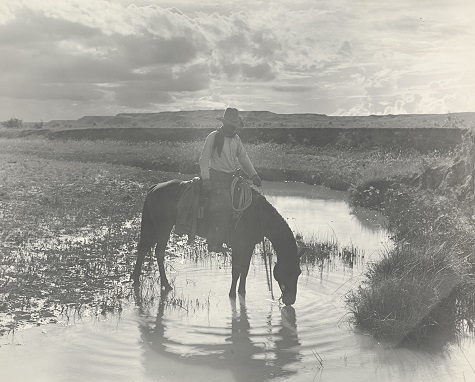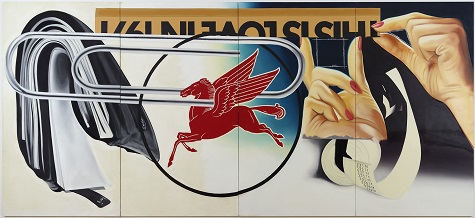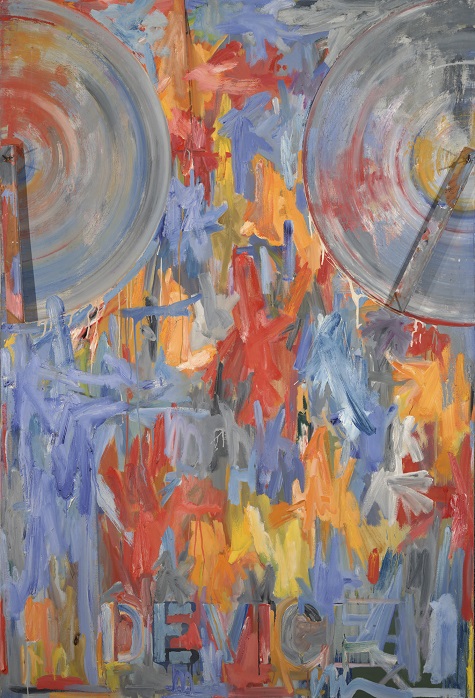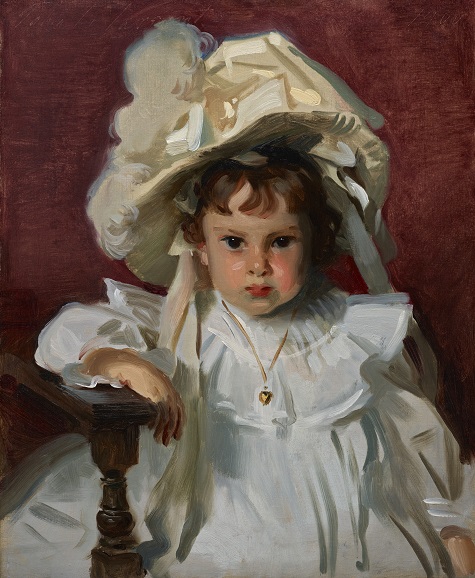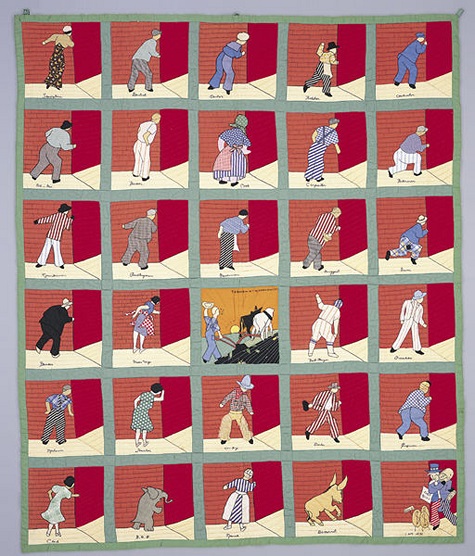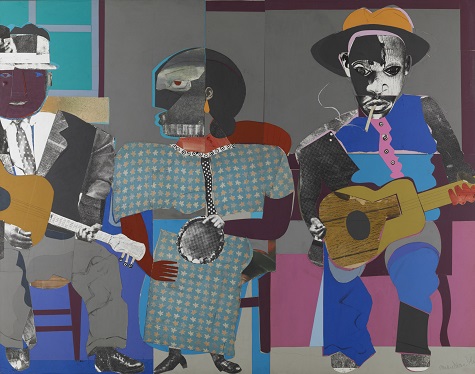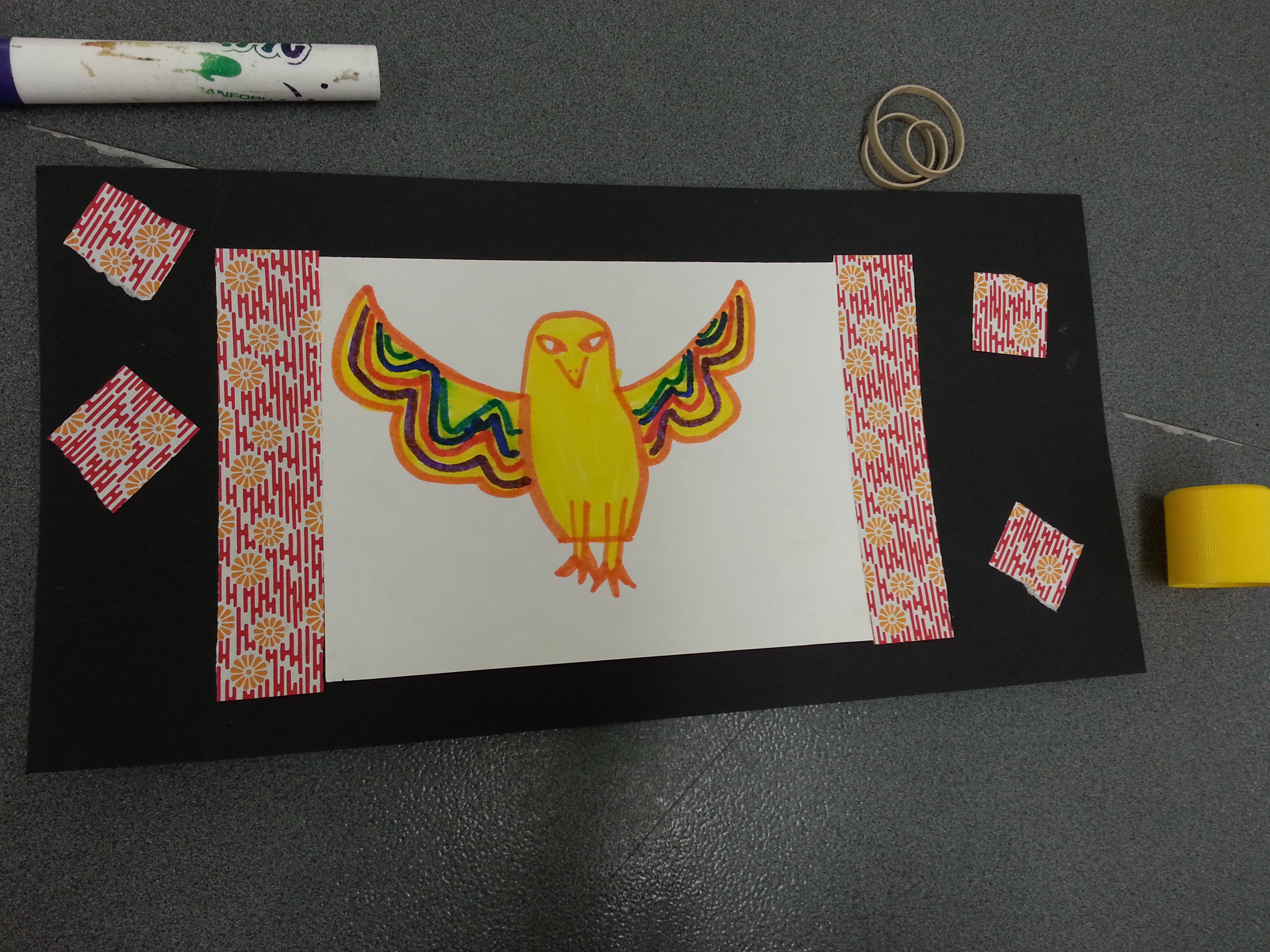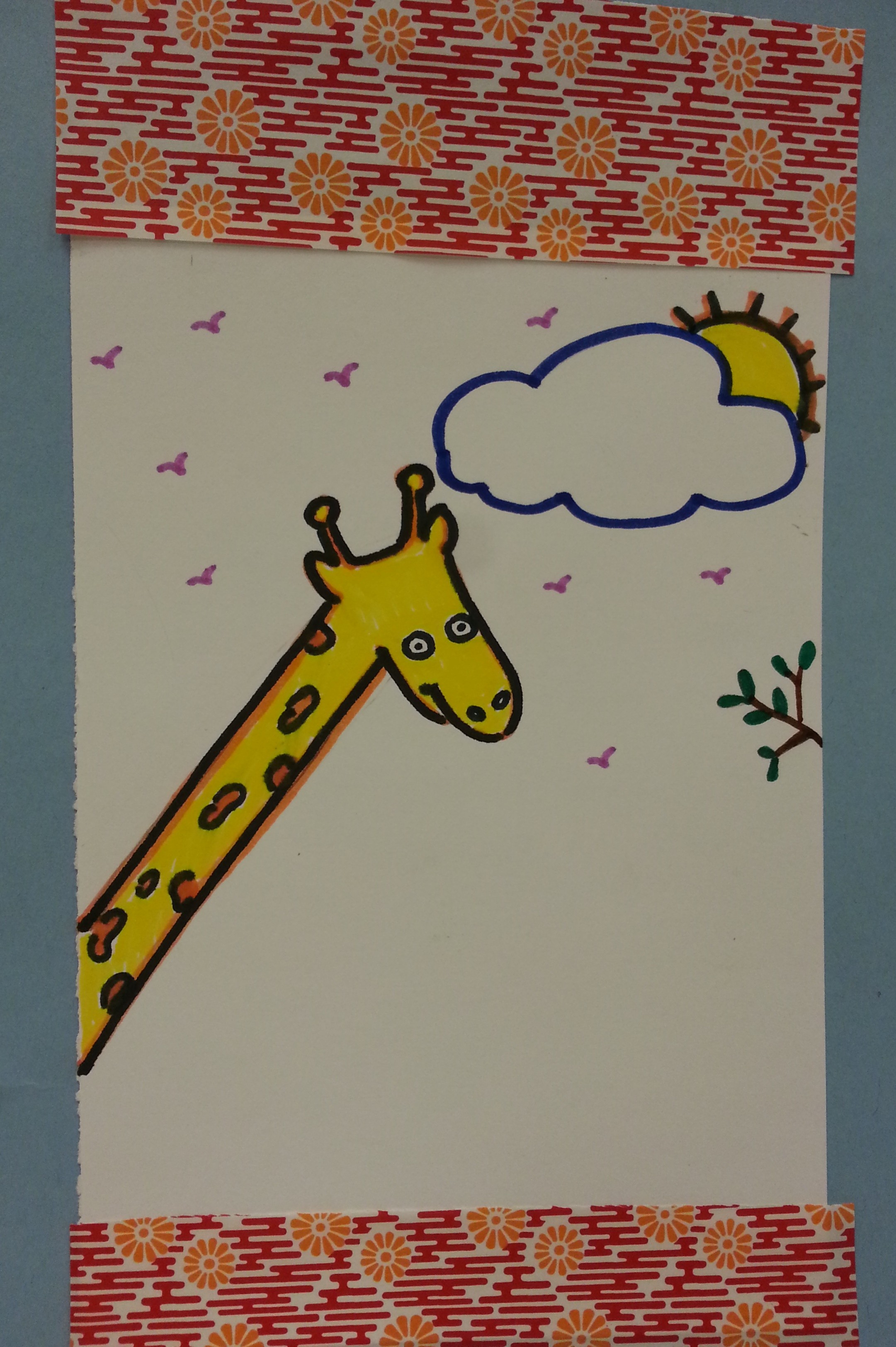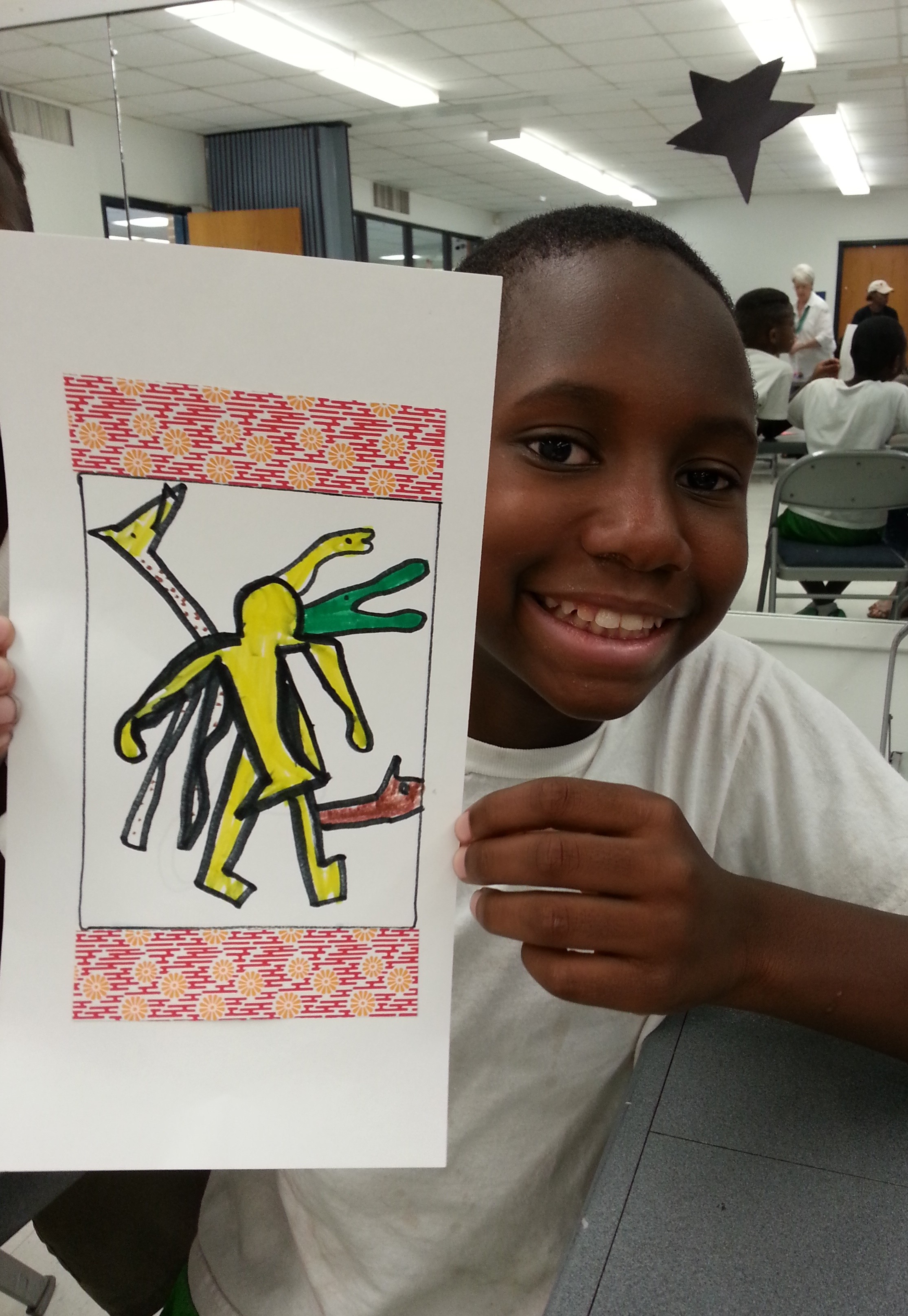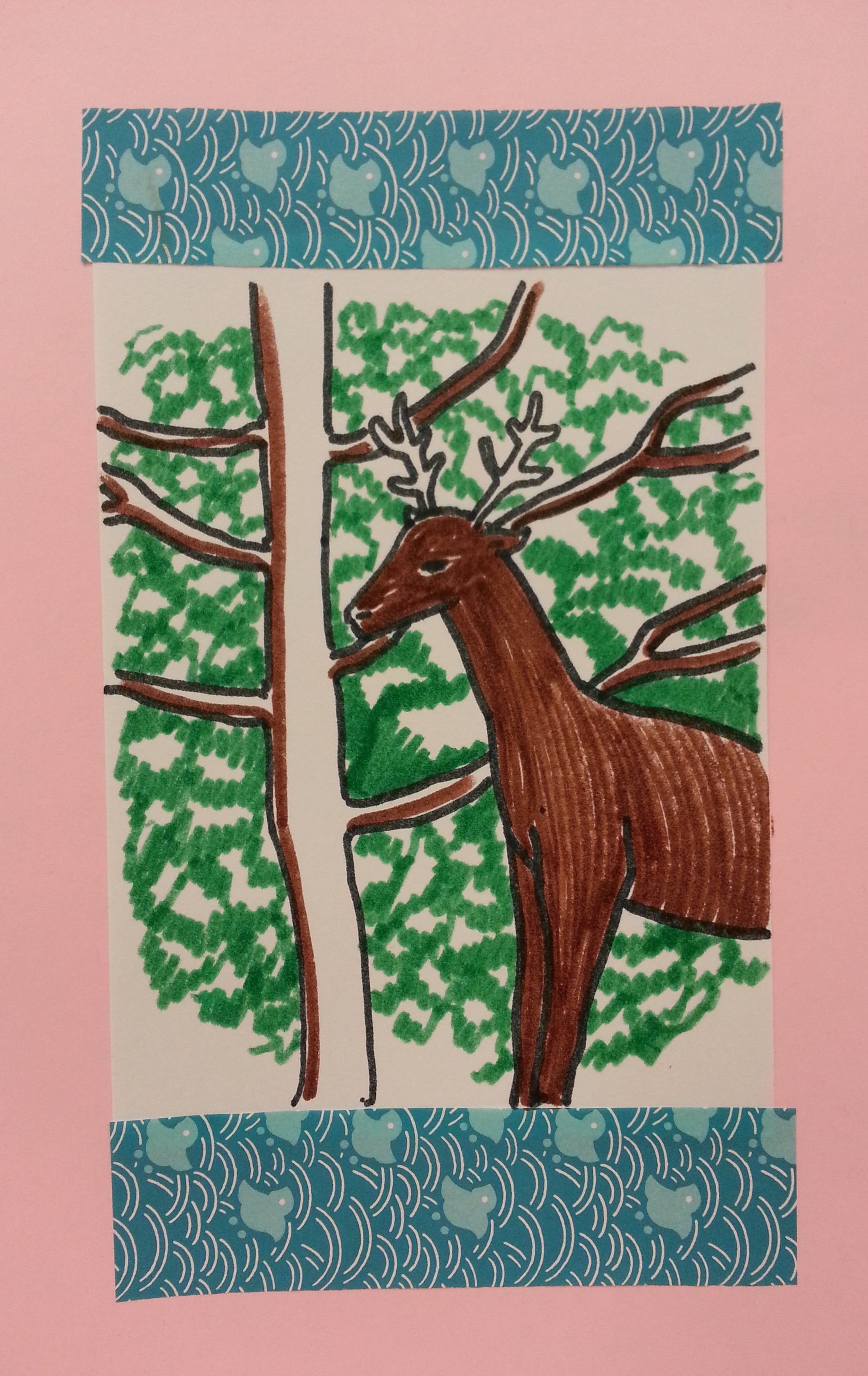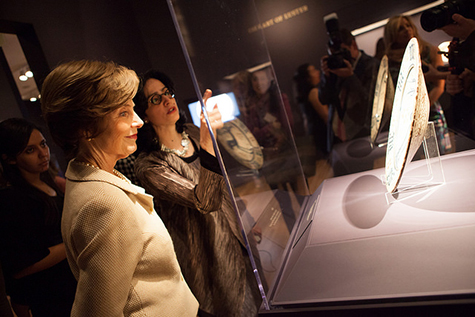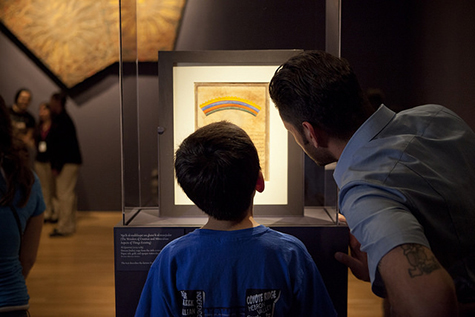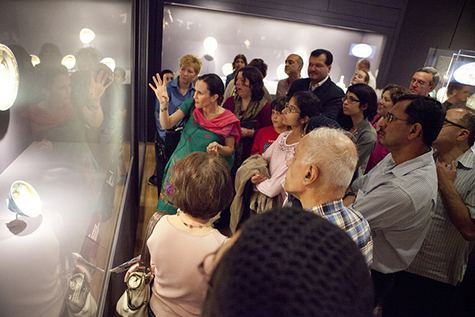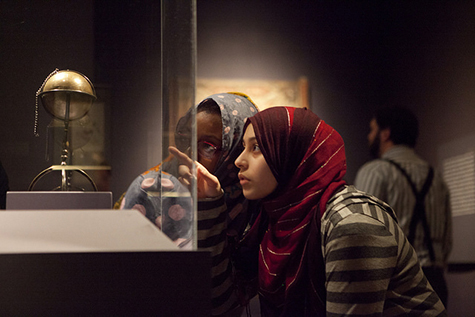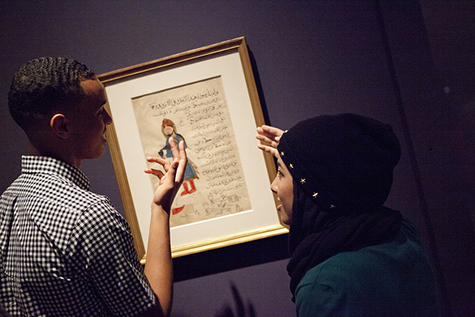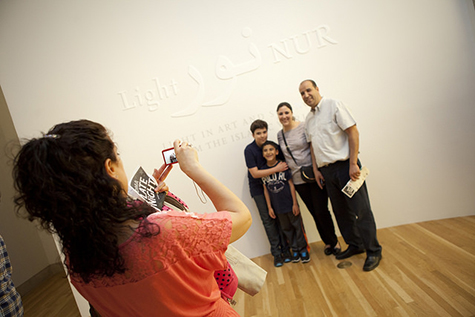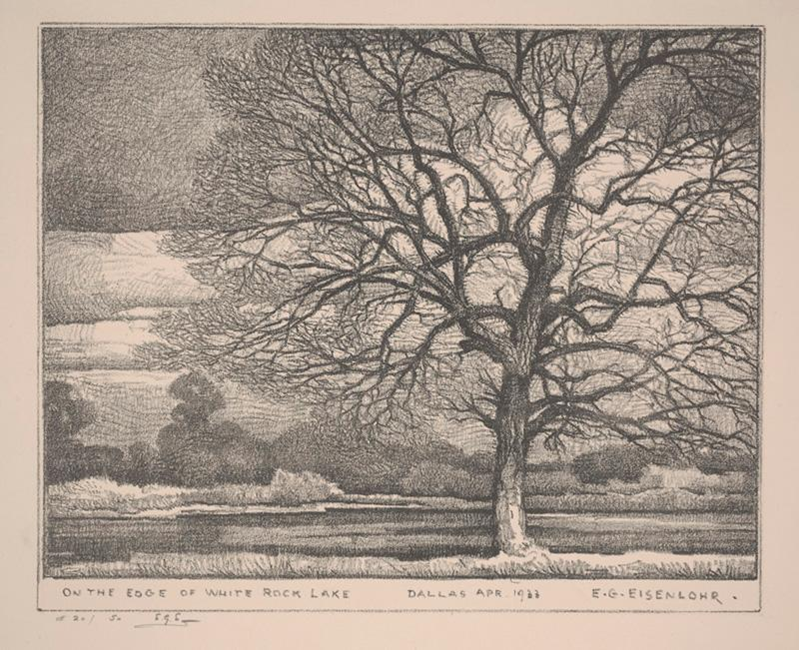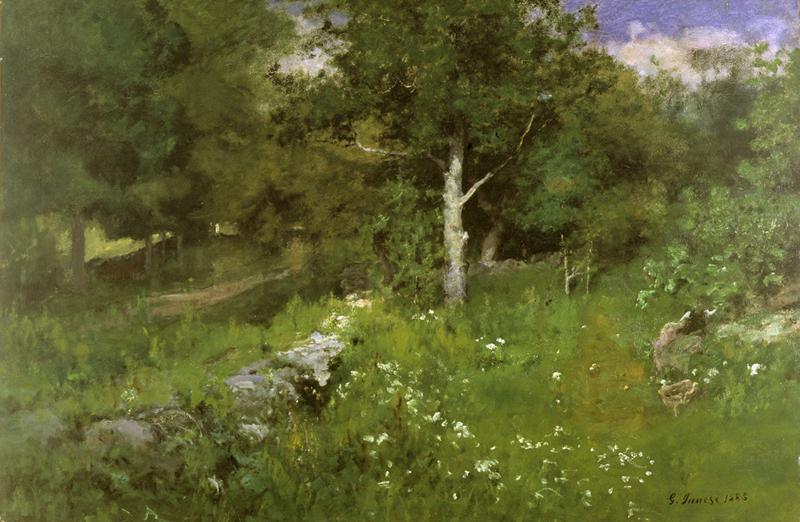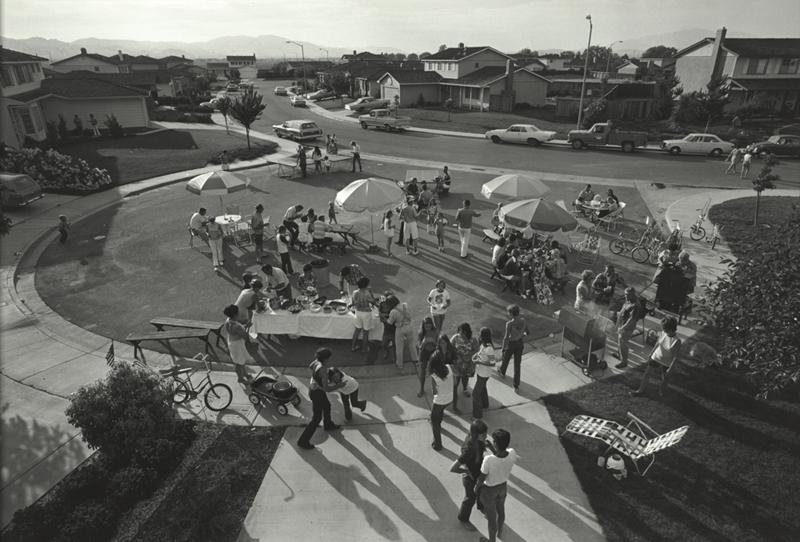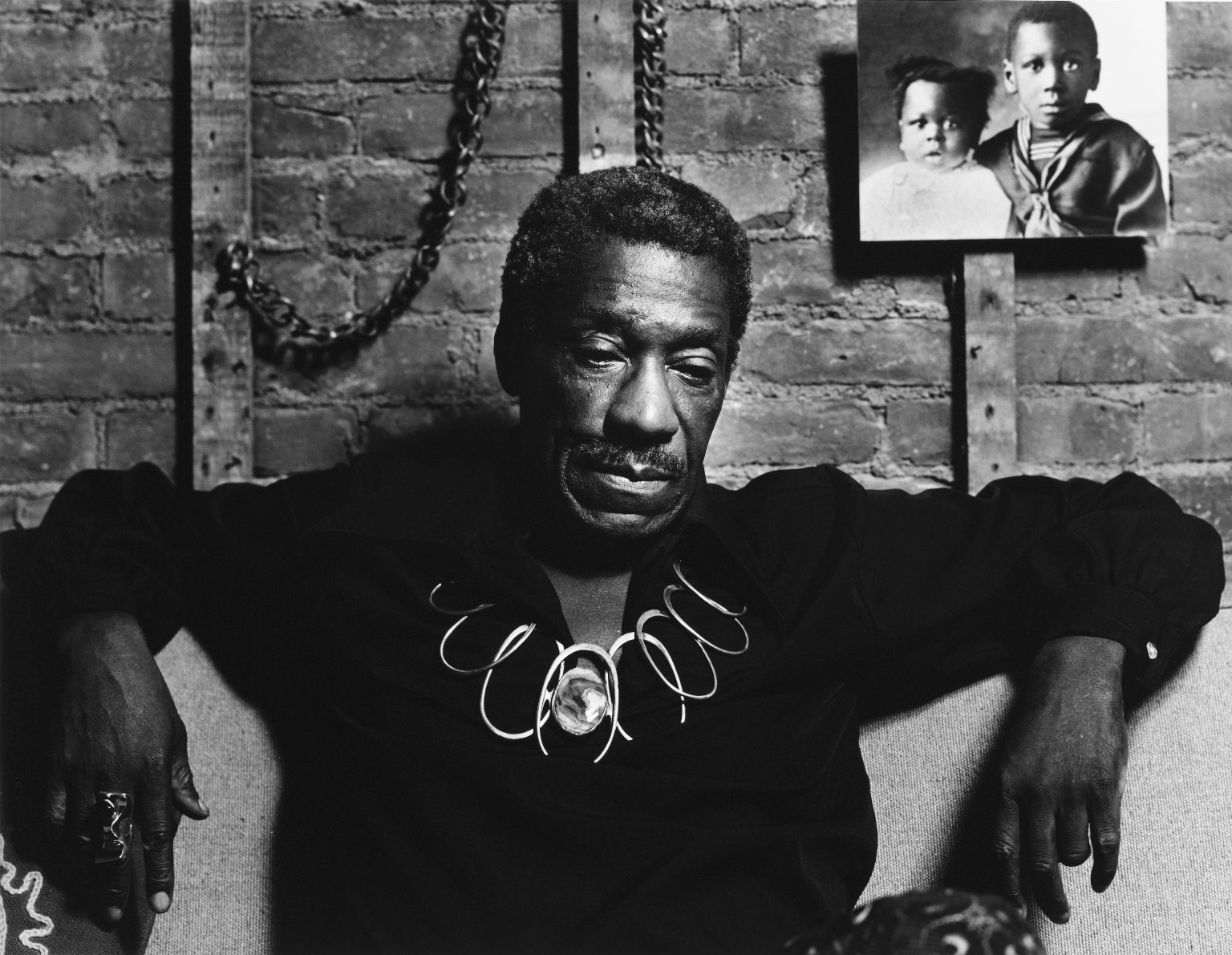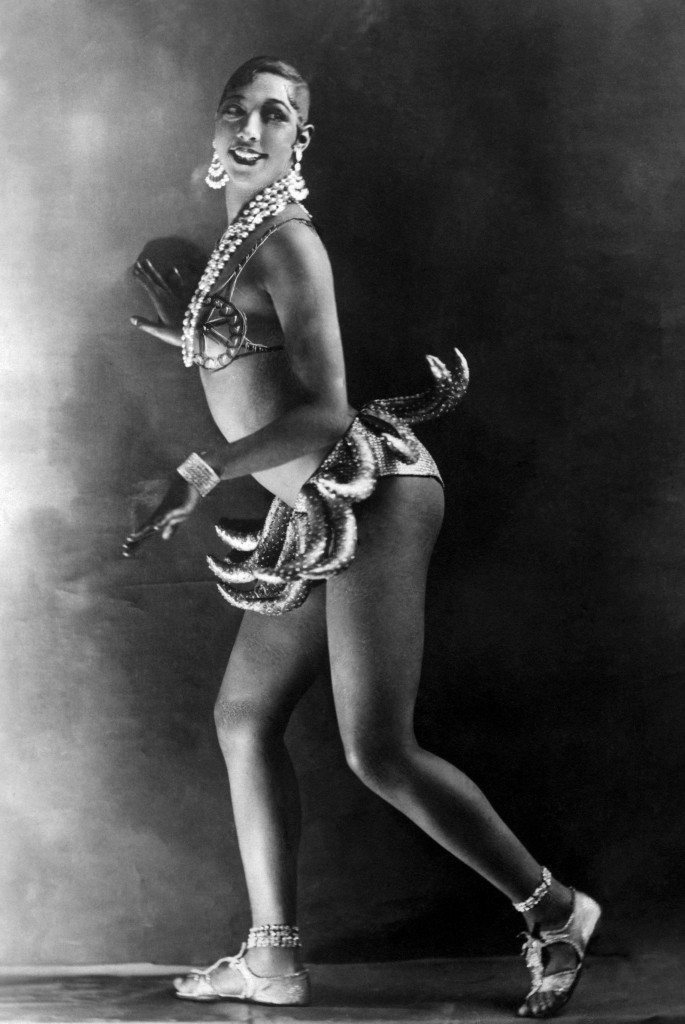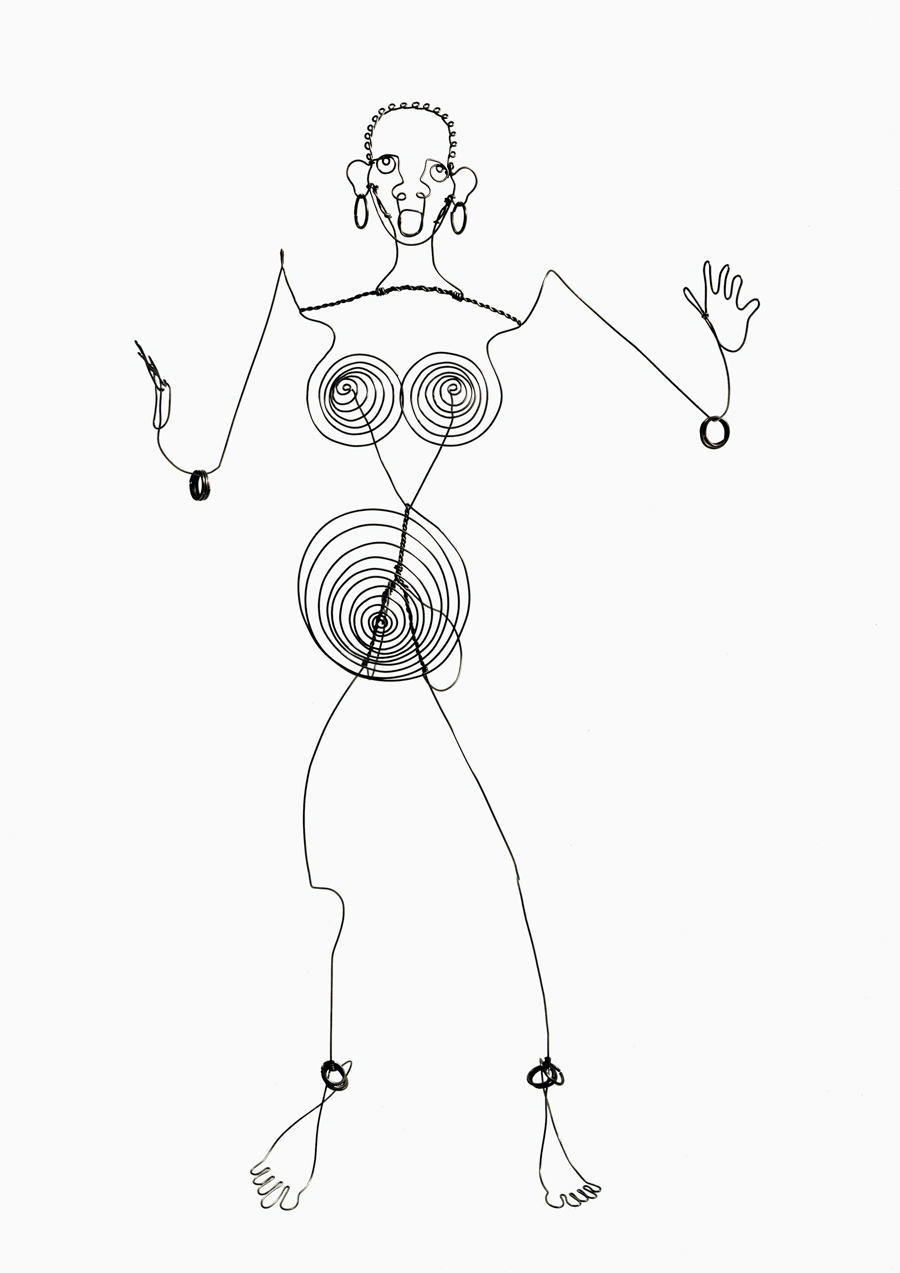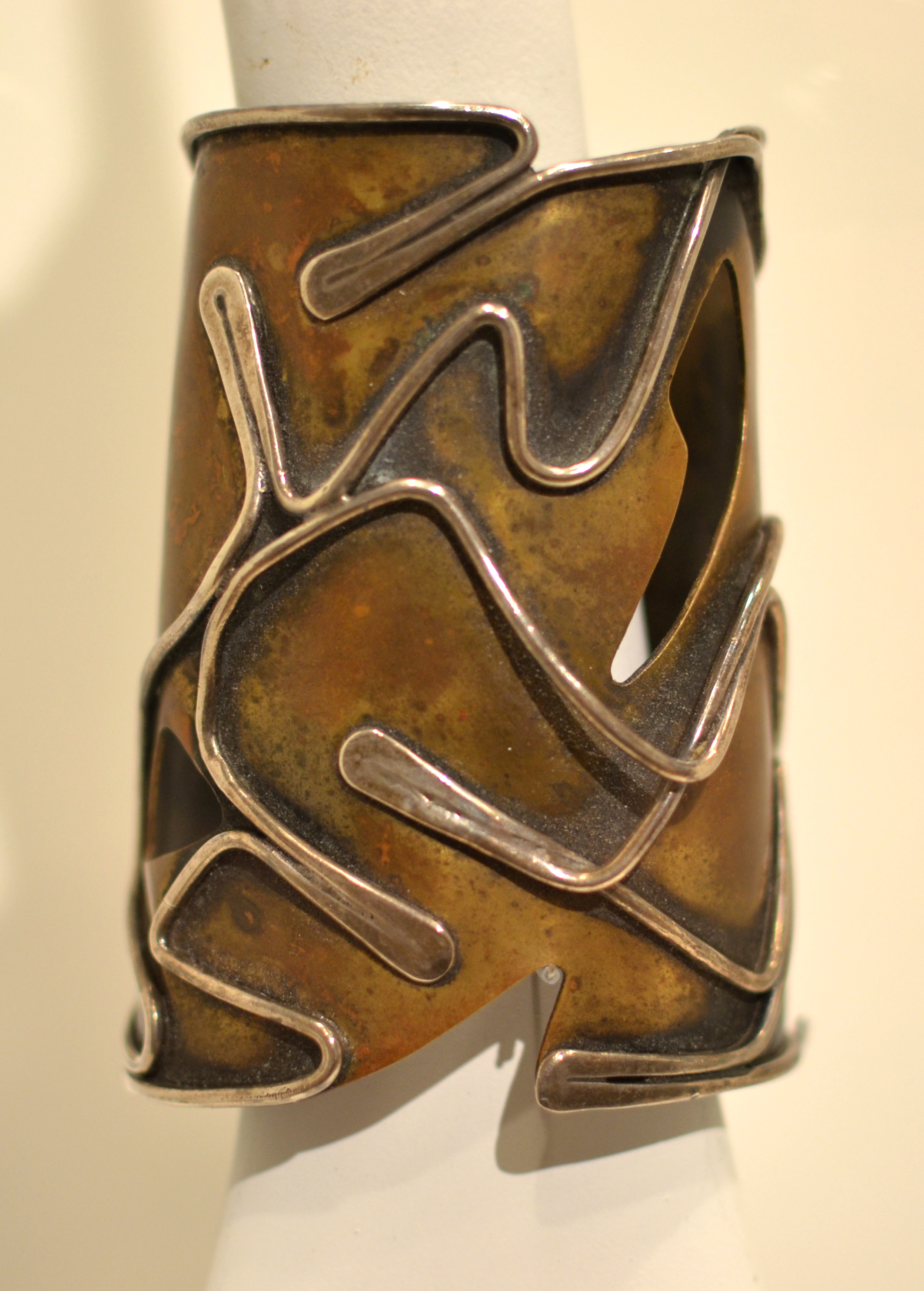With school out, Go van Gogh volunteers are spending their days in the community, visiting recreation centers, Boys & Girls Clubs, and libraries with art-making programs. Summer programs are casual, always fun, and sometimes a little wild…in the best possible way!
We’re embracing summertime wildness in all its glory this year, with a new Go van Gogh outreach program called Into the Wild with the DMA. The program was inspired by the children’s book Mr. Tiger Goes Wild, in which a very proper Mr. Tiger, bored with being so proper all the time, decides that he needs to have a little fun; so, he goes wild. Really wild! ROAAAR!!! It’s a story that all of us—kids, especially—can relate to when the summer heat hits.
Into the Wild, which will be offered at Dallas Public libraries through the remainder of June and July, begins with story time and an animal game. We then put on our safari hats and venture into the wild depths of the DMA’s collection, exploring big cats and fierce mythical animals in artworks from the African savanna to the Indonesian jungle.
-
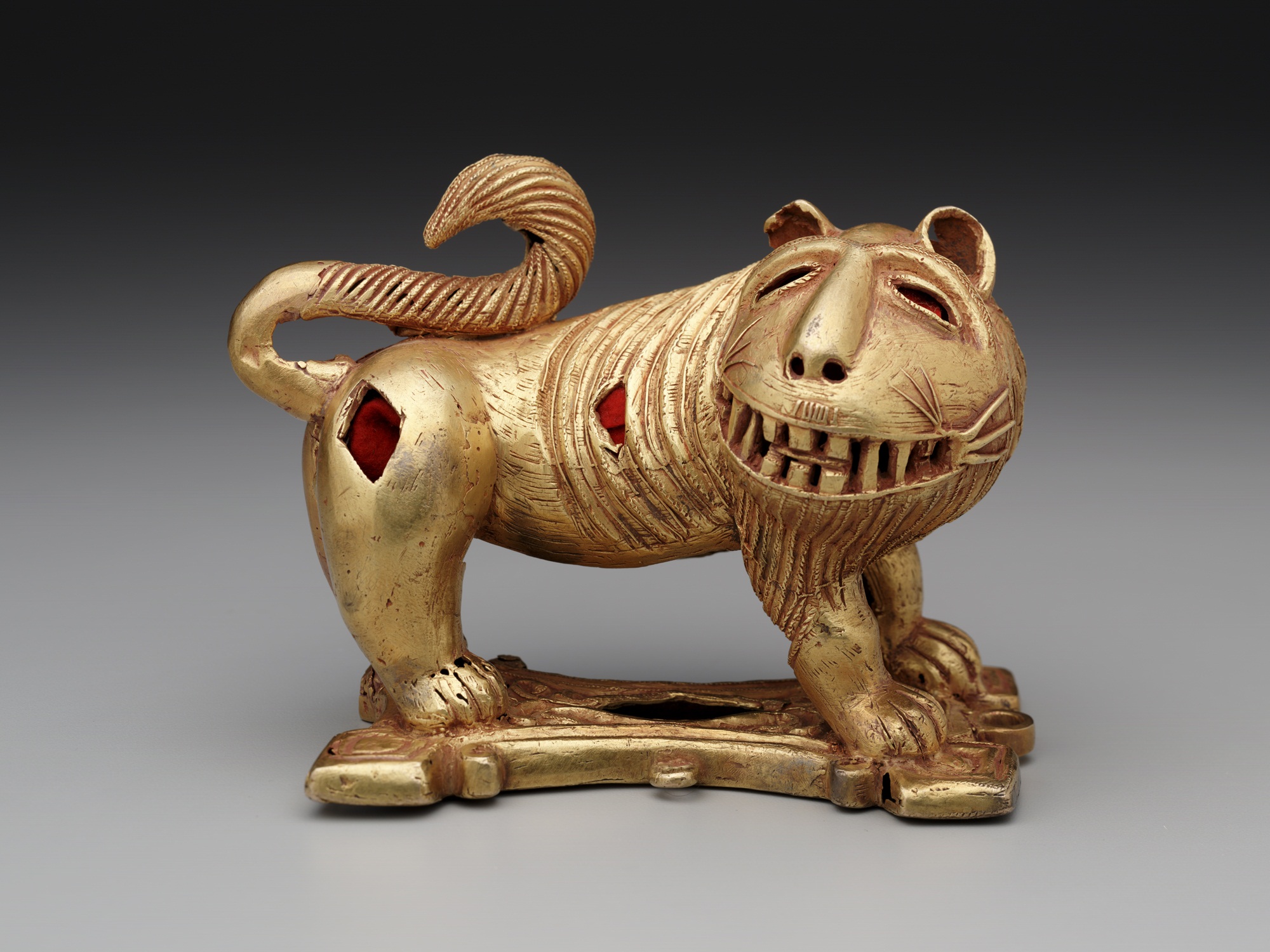
-
Sword ornament in the form of a lion, Ghana: Ashante peoples, mid 20th century, Dallas Museum of Art, The Eugene and Margaret McDermott Art Fund, Inc.
-
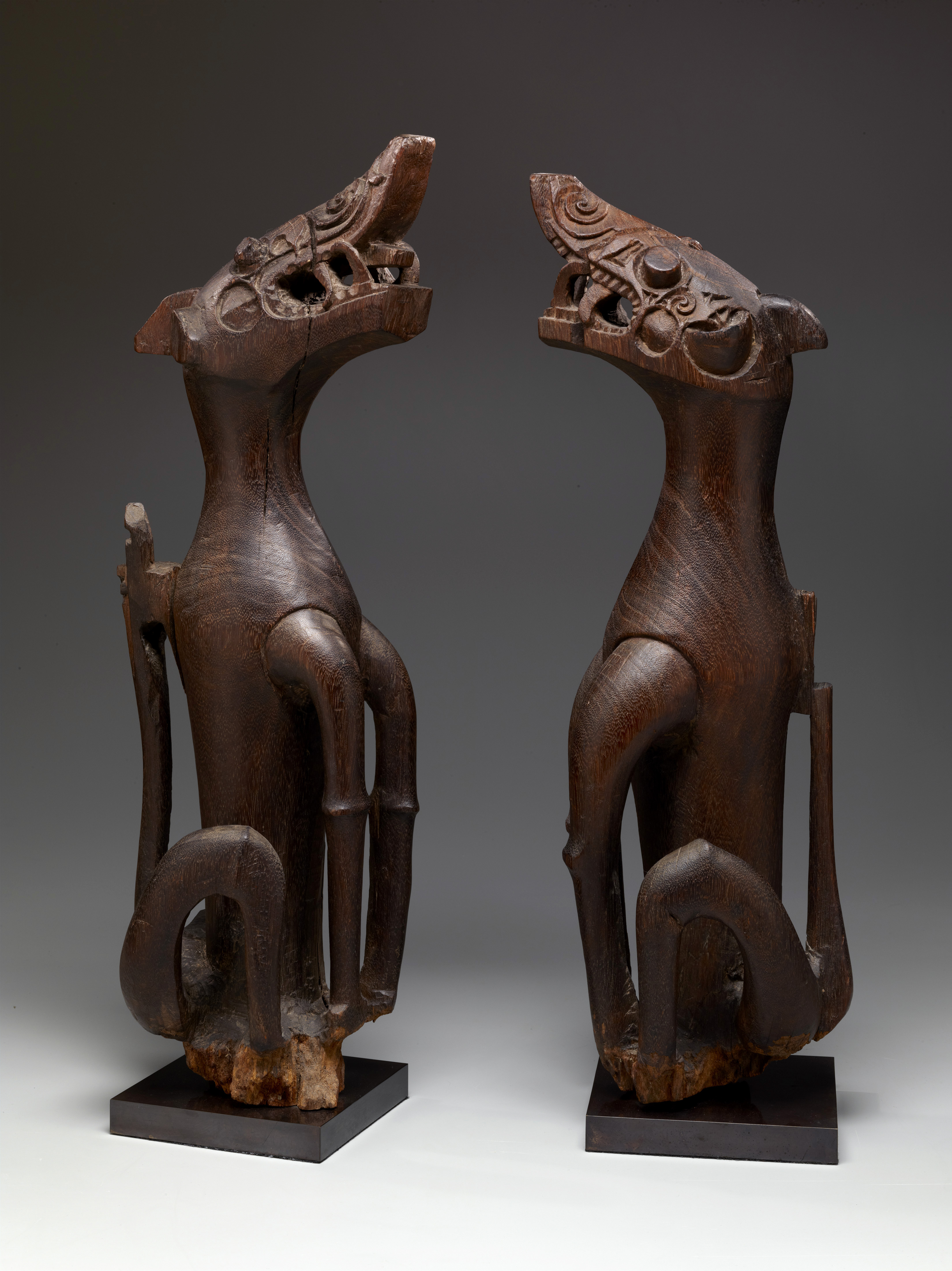
-
Pair of mythical asos, Malaysia: Kayan people, 19th century, Dallas Museum of Art, The Roberta Coke Camp Fund and the Museum League Purchase Fund
-
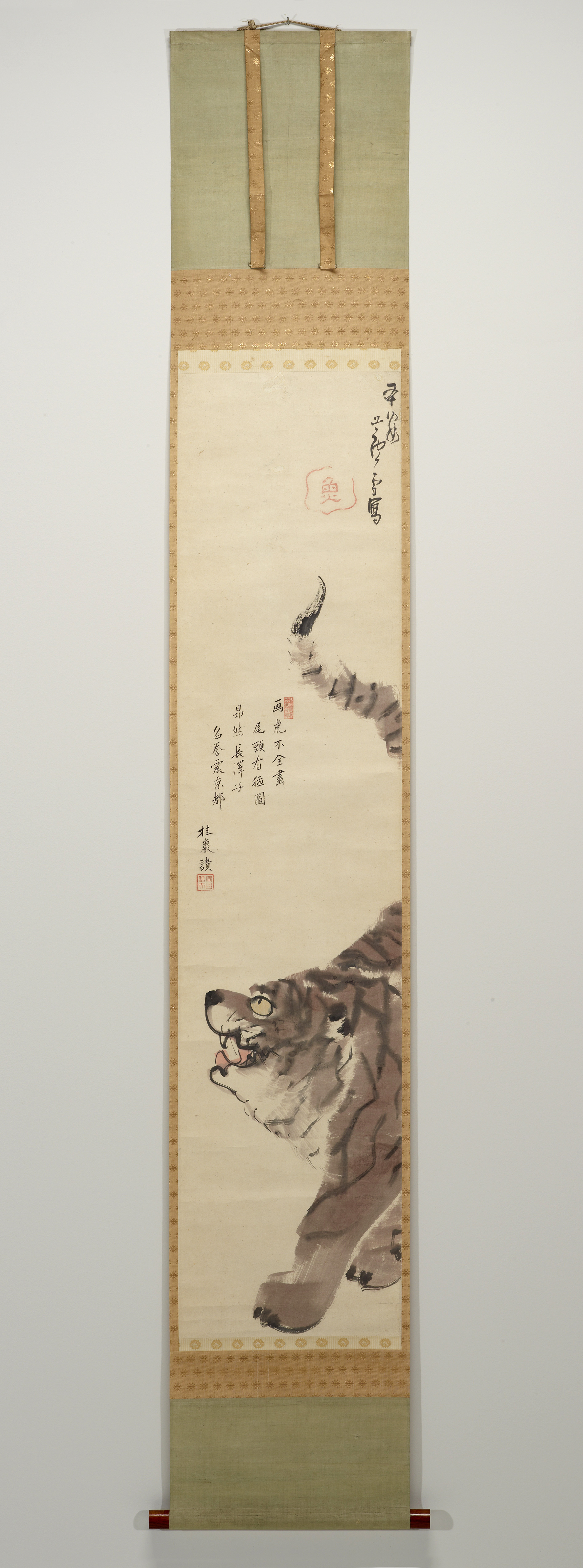
-
Nagasawa Rosetsu, Tiger, after 1792, Dallas Museum of Art, General Acquisitions Fund
Our art safari ends with time to reflect and create an artwork inspired by one of our discoveries, the DMA’s Japanese Tiger.
If you’d like to join us on an art safari this summer, upcoming program dates and locations are listed below. Into the Wild is designed for children ages five to nine, but art and animal-lovers of all ages are welcome! Be sure to call the library ahead of time to confirm space availability, as programs are limited to thirty participants.
JULY
Tuesday, July 1, 10:30 a.m.
Hampton-Illinois, 2951 South Hampton Road, 75224
214-670-7646
Tuesday, July 8, 2:00 p.m.
Dallas West, 2332 Singleton Boulevard, 75212
214-670-6445
Tuesday, July 15, 2:00 p.m.
Audelia, 10045 Audelia Road, 75238
214-670-1350
Thursday, July 17, 2:30 p.m.
Skillman Southwestern, 5707 Skillman Street, 75206
214-670-6078
Tuesday, July 22, 2:00 p.m.
Polk-Wisdom, 7151 Library Lane, 75218
214-670-1947
Friday, July 25, 2:00 p.m.
Lochwood, 11221 Lochwood Boulevard, 75218
214-670-8403
Tuesday, July 29, 2:00 p.m.
Skyline, 6006 Everglade Road, 75227
214-670-0938
Thursday, July 31, 2:00 p.m.
White Rock Hills, 9150 Ferguson Road, 75228
214-670-8843
And if you can’t join us at a library, stop by the Museum and use our In the Swim Family Gallery Guide to chart your own summertime animal adventure!
Amy Copeland
Manager of Go van Gogh and Community Teaching Programs
